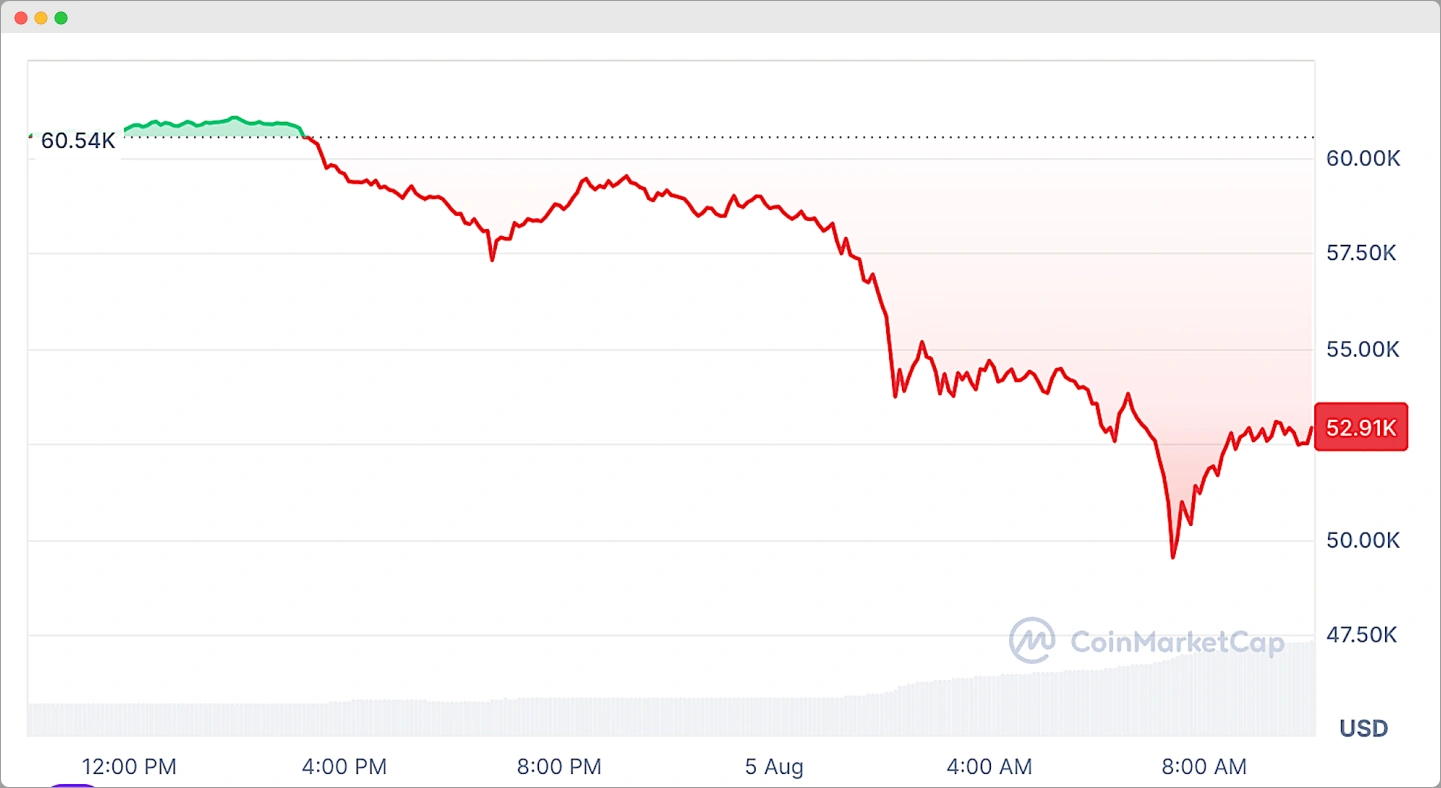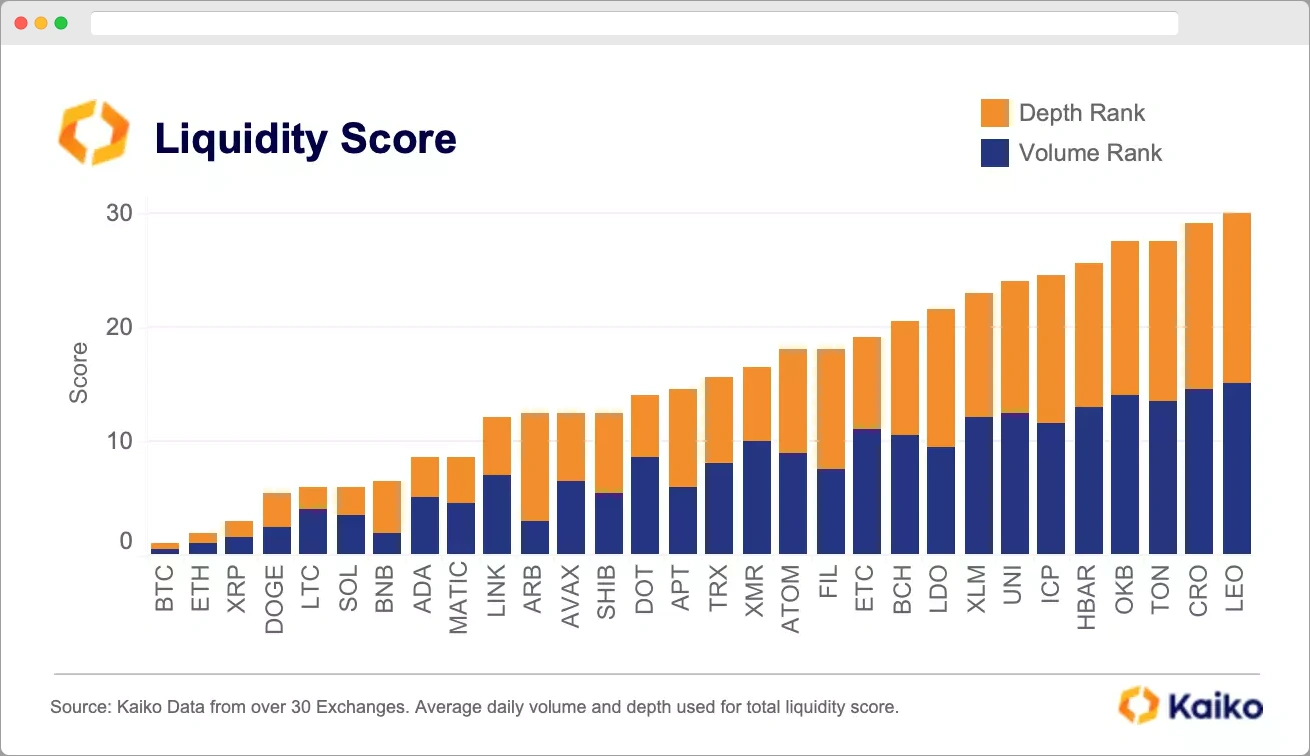What is Liquidity?
Liquidity is one of the most critical concepts in any financial market, and the cryptocurrency world is no exception. But, what it is?
In simple terms, liquidity refers to how quickly and easily an asset can be bought or sold without significantly affecting its price.
For cryptocurrencies, high liquidity means traders and investors can enter or exit positions smoothly, while low liquidity can result in higher volatility, slippage, and potentially greater risk.
Below is a streamlined overview of why liquidity matters in crypto, the factors that influence it, how it is measured, and what strategies traders can use to navigate different market conditions.
Key Takeaways:
ShowLiquidity in the Cryptocurrency World
Liquidity in crypto refers to the ease of conversion. It measures how a digital asset, like Bitcoin or Ethereum, can be exchanged.
This exchange could be for another crypto asset or fiat currency. Liquidity ensures this happens without significant price changes.
A highly liquid market has enough participants and trading activity on both the buy and sell side, which keeps price movements relatively stable.
For example, Bitcoin is commonly regarded as one of the most liquid cryptocurrencies because it is:
- Widely traded across numerous exchanges.
- Supported by large trading volumes.
- Backed by a global network of buyers and sellers.
In contrast, a lesser-known altcoin may trade on only a few small exchanges and lack sufficient trading volume.
In that scenario, an investor trying to sell a large amount of that altcoin could sharply push down its market price.
Why Liquidity Matters in the Crypto Market

1. Ease of Entering and Exiting Positions
High liquidity lets you buy or sell a cryptocurrency quickly without waiting too long for a matching order.
If you need to exit your position—either to realize gains or cut losses—the presence of ample buyers and sellers means you can do so efficiently.
2. Reduced Price Volatility and Slippage
In deep and liquid markets, a single trade (even a large one) has less impact on the overall price.
This narrower gap between the lowest ask (selling price) and highest bid (buying price) reduces slippage—the difference between the expected price of a trade and the actual price at which it is executed.
3. Market Stability and Confidence
Liquid markets are generally less susceptible to manipulation, as it is harder for a small group of players to move prices significantly.
High liquidity also attracts institutional investors, as it signals a healthier, more robust market.
4. Efficient Price Discovery
Large numbers of buyers and sellers, combined with significant volume, improve price discovery—the process of determining an asset’s fair value.
When liquidity is high, the market price of a cryptocurrency tends to align closely with the intrinsic demand and supply.
Factors Influencing Liquidity in Crypto
1. Trading Volume
Trading volume—the total amount of an asset bought and sold over a given period—is a direct gauge of liquidity. High-volume cryptocurrencies such as Bitcoin and Ethereum typically have sufficient buyers and sellers, stabilizing prices.
2. Number of Supported Exchanges
Cryptocurrencies listed on multiple major exchanges usually benefit from a broader global user base. This not only increases visibility but also allows traders from different regions to trade at varied times, enhancing overall liquidity.
3. Market Sentiment and Popularity
Positive news, technological developments, or endorsements by influential figures can boost market participation. Likewise, uncertainty or negative headlines can discourage trading activity and reduce liquidity.
4. Regulatory Environment
Clear, supportive regulations tend to attract more participants—retail and institutional—leading to deeper markets. Conversely, regulatory crackdowns can drive away volume and lower liquidity.
5. A Use Cases of Crypto Itself
Cryptocurrencies that power widely used applications (e.g., those enabling smart contracts, decentralized finance, NFTs, etc.) generally see higher liquidity. Broader usage fosters more frequent transactions, increasing trading volumes.
6. Role of Market Makers and Liquidity Providers
Market makers and liquidity providers place buy and sell orders to keep markets active.
They help reduce spreads and make it possible for traders to transact sizable orders with minimal price impact.
Measuring Liquidity in Crypto

1. Bid-Ask Spread
The gap between the highest bid (what buyers are willing to pay) and the lowest ask (what sellers are willing to accept) is called the bid-ask spread.
A narrow spread typically indicates better liquidity because it shows that buyers and sellers largely agree on fair market value.
2. Trading Volume
Looking at 24-hour trading volumes for a crypto asset is a reliable starting point. Higher volumes tend to align with more active and robust markets, translating to smoother executions.
3. Market Depth
Beyond the top bid and ask prices, one should also consider the cumulative volume of buy and sell orders at various price levels in an order book.
A deep order book means the market can handle bigger trades without dramatic price swings.
4. Overall Market Size
While crypto has grown rapidly, it is still small compared to stocks market cap, bonds, or gold.
The entire crypto market’s size can also affect how liquid an asset may be—especially during times of heightened market volatility or significant capital inflows and outflows.
Managing Liquidity in DeFi: Automated Market Makers (AMMs)
In traditional markets, liquidity is often maintained by professional market-making firms. In decentralized finance (DeFi), protocols use Automated Market Makers (AMMs) to achieve a similar goal.
AMMs rely on “liquidity pools,” where users—called liquidity providers—deposit pairs of tokens.
Traders then swap these tokens within the pool, with algorithms automatically adjusting prices based on the pool’s token ratios. Key points include:
- Liquidity Pools: Smart contracts holding reserves of tokens to facilitate trades.
- Pricing Mechanism: Often derived from formulas like the constant product formula ( x \times y = k ), where ( x ) and ( y ) are quantities of each token in the pool.
- Impermanent Loss: Risk incurred by liquidity providers when the price of deposited tokens diverges compared to simply holding them.
- Liquidity Provider Rewards: LPs earn a portion of trading fees—compensation for providing tokens to the pool.
AMMs have revolutionized liquidity provision in crypto by lowering barriers for new participants and enabling 24/7 market making.
Trading Strategies for Any Liquidity Conditions

1. High-Liquidity Markets
- Market Orders: Executed quickly, often with minimal slippage.
- Scalping and High-Frequency Trading: Frequent, small-profit trades are more viable due to tight spreads.
- Algorithmic Trading: Automated strategies thrive in environments with continuous order flow.
2. Low-Liquidity Markets
- Limit Orders: Allows you to control the price at which you trade, reducing the risk of excessive slippage.
- Position Sizing: Large trades can cause significant price moves. Breaking big orders into smaller portions can help mitigate risk.
- Timing Trades: Executing trades during peak hours (when global trading overlaps) may offer slightly better order books.
Challenges and the Future of Crypto Liquidity
While liquidity in major cryptocurrencies continues to grow, numerous challenges remain:
- Market Fragmentation: Crypto trading activity is split across many centralized and decentralized exchanges, creating potential arbitrage opportunities and uneven liquidity.
- Regulatory Uncertainty: Sudden regulatory changes can hamper trading activity and liquidity in certain regions.
- Volatility: Even large cryptocurrencies can experience sharp price fluctuations, partly due to macroeconomic events or rapid changes in market sentiment.
Despite these hurdles, advances in decentralized finance, institutional adoption, and the emergence of cross-chain technologies are leading to deeper, more efficient markets.
As more participants enter the crypto space, liquidity is set to increase further, improving price stability and fostering greater confidence among both retail and institutional players.
Final Thought
Liquidity underpins the health and stability of any market, and in the rapidly evolving cryptocurrency ecosystem, it is paramount.
High liquidity means tighter spreads, easier entry and exit, and reduced volatility—factors that are crucial for traders, investors, and large institutions alike.
By understanding how liquidity works, traders or investor can navigate the crypto landscape more effectively, by adapting trading strategies to different market conditions,
Frequently Asked Questions (FAQs)
Does crypto have high liquidity?
Yes, many major cryptocurrencies like Bitcoin and Ethereum have relatively high liquidity due to their large trading volumes and multiple exchange listings. However, liquidity levels vary between different crypto assets and exchanges, with some smaller or less popular tokens being much less liquid.
What is liquidated in crypto?
Liquidation in crypto often refers to the forced closure of a leveraged trading position when a trader’s collateral no longer meets the margin requirement. Essentially, the position is “liquidated” by the exchange to cover potential losses, preventing the trader’s account balance from going negative.
What is liquidity in DeFi?
Liquidity in DeFi (Decentralized Finance) is the ease with which users can trade or exchange tokens on decentralized platforms without causing dramatic price changes. It typically relies on liquidity pools and Automated Market Maker (AMM) models, where users (liquidity providers) supply tokens to facilitate smooth trading.

